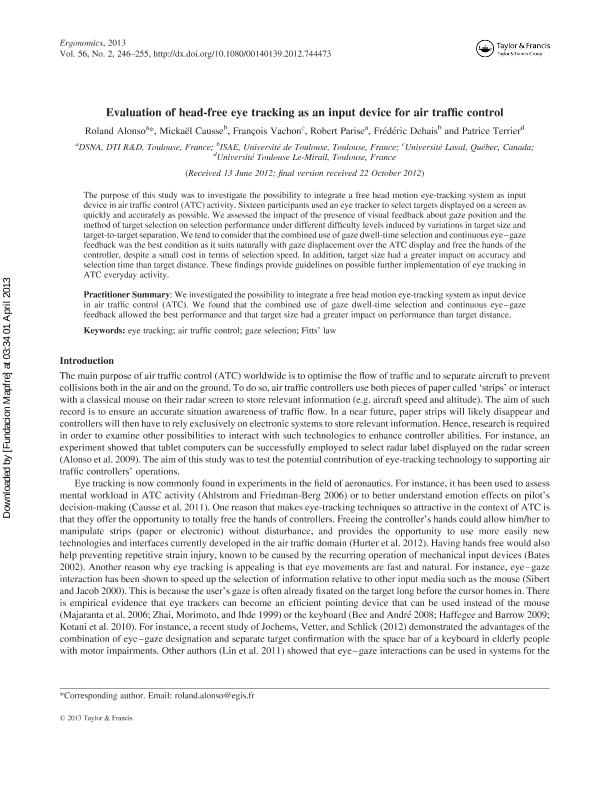Evaluation of head-free eye tracking as an input device for air traffic control

Contenido multimedia no disponible por derechos de autor o por acceso restringido. Contacte con la institución para más información.
| Tag | 1 | 2 | Valor |
|---|---|---|---|
| LDR | 00000cab a2200000 4500 | ||
| 001 | MAP20130010793 | ||
| 003 | MAP | ||
| 005 | 20130401175652.0 | ||
| 008 | 130401e20130204esp|||p |0|||b|spa d | ||
| 040 | $aMAP$bspa$dMAP | ||
| 084 | $a875 | ||
| 245 | 0 | 0 | $aEvaluation of head-free eye tracking as an input device for air traffic control$cRoland Alonso...[et.al] |
| 520 | $aThe purpose of this study was to investigate the possibility to integrate a free head motion eye-tracking system as input device in air traffic control (ATC) activity. Sixteen participants used an eye tracker to select targets displayed on a screen as quickly and accurately as possible. We assessed the impact of the presence of visual feedback about gaze position and the method of target selection on selection performance under different difficulty levels induced by variations in target size and target-to-target separation. We tend to consider that the combined use of gaze dwell-time selection and continuous eyegaze feedback was the best condition as it suits naturally with gaze displacement over the ATC display and free the hands of the controller, despite a small cost in terms of selection speed. In addition, target size had a greater impact on accuracy and selection time than target distance. These findings provide guidelines on possible further implementation of eye tracking in ATC everyday activity. | ||
| 773 | 0 | $wMAP20100019818$tErgonomics : the international journal of research and practice in human factors and ergonomics$dOxon [United Kingdom] : Taylor & Francis, 2010-$x0014-0139$g04/02/2013 Volumen 56 Número 2 - febrero 2013 , p. 246-255 |

